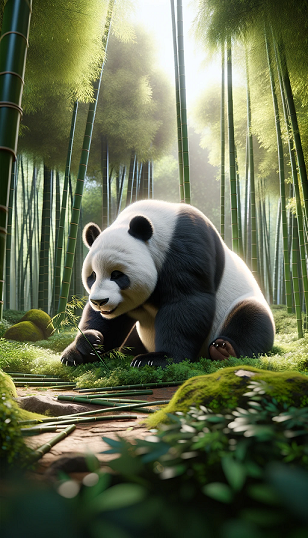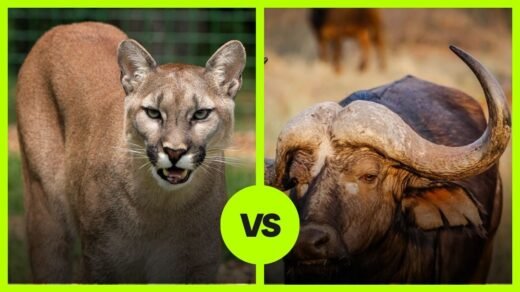Grizzly Bear vs. Panda: Who Would Win?
In the intriguing world of hypothetical animal battles, pitting a grizzly bear against a giant panda is an unusual yet captivating scenario. Both are members of the bear family but lead vastly different lives, possessing unique adaptations and characteristics that influence their combat abilities. This article delves into their strengths, typical lifestyles, and combat styles to assess who would likely emerge victorious in such an unlikely showdown.
Grizzly Bear: The Formidable Predator
Strength and Physicality
In the realm of terrestrial predators, the grizzly bear stands as a paragon of strength and physical prowess. Adult grizzlies can reach staggering weights of up to 790 pounds, a testament to their robust and muscular build. This immense size is not just for show; it’s a crucial component of their survival and dominance in the wild. The bulk of their strength is concentrated in their upper body, which is essential for a variety of activities, from foraging to asserting dominance within their territory.

Grizzlies also possess formidable natural weapons that amplify their status as apex predators. Their claws, which can grow up to 4 inches long, are not just impressive in length but also in functionality. These claws serve a dual purpose – they are powerful tools for digging into the earth in search of food, such as roots or burrowing animals, and they are deadly weapons for slashing at their prey or defending against threats. Complementing their impressive claws are their powerful jaws, capable of exerting significant force. These jaws are an essential aspect of their hunting arsenal, allowing them to bite through tough hides and even break bones, a critical ability when tackling large prey or in combat.
The combination of their muscular build, long and sharp claws, and powerful jaws make grizzlies a formidable force in the animal kingdom, equipped not only for survival but for dominance in their rugged habitats.
Lifestyle and Conflicts
- Omnivorous Diet: Grizzlies have a diverse diet, ranging from berries and roots to large mammals like elk or deer. This versatility in diet is reflected in their adaptable hunting strategies.
- Territorial Nature: They are known to be highly territorial and aggressive, especially when provoked or during encounters with other bears over food or mating rights.
Combat Style
- Offensive Tactics: In a fight, a grizzly would likely rely on its brute force, using powerful swipes of its claws and attempting to bite its opponent with its strong jaws.
- Defensive Abilities: Their thick fur and dense muscle mass provide them with a natural armor against attacks.
Giant Panda: The Peaceful Giant

Strength and Physicality
- Large but Less Aggressive: Pandas are large, with males weighing up to 250 pounds, but they are not as muscular or aggressive as grizzlies.
- Adaptations for Feeding: Their physical strength is more adapted for their bamboo diet, with strong jaws and teeth for crushing bamboo stalks.
Lifestyle and Conflicts
- Herbivorous Diet: Pandas almost exclusively eat bamboo, which makes up about 99% of their diet. Their lifestyle is more sedentary compared to grizzlies.
- Solitary and Non-Territorial: They are solitary animals and generally avoid conflict. Pandas spend most of their time eating and resting.
Combat Style
- Defensive Tactics: In the rare instances where pandas engage in combat, they would use their strong jaws as their primary weapon. However, they lack the aggressive combat instincts of grizzlies.
Analysis and Winning Chances
When assessing the chances of victory in a hypothetical battle between a grizzly bear and a giant panda, several key factors must be considered:
- Physical Strength: The grizzly bear has a significant advantage in terms of size, strength, and aggression. Its lifestyle as a predator means it is accustomed to physical confrontations.
- Combat Experience: Grizzlies, due to their territorial nature and predatory lifestyle, are more experienced in combat than the predominantly peaceful and solitary panda.
- Defensive Abilities: While both have thick fur, the grizzly’s is more adapted to withstand attacks, especially from other large animals.
Given these considerations, the grizzly bear would likely have a higher chance of winning in such a confrontation. The grizzly’s combination of raw strength, combat experience, and effective natural weaponry make it a formidable opponent for the less aggressive and combat-adapted giant panda.
Conclusion
In summary, while the giant panda is an iconic and robust animal in its own right, its adaptations are geared more towards a peaceful, herbivorous lifestyle. The grizzly bear, on the other hand, is a seasoned predator with the physical attributes and behavioral traits that give it a distinct advantage in a hypothetical battle. Therefore, the grizzly bear would likely emerge as the victor in this unlikely matchup.
Final Verdict: Odds of Winning
So, here’s the skinny. Given the grizzly bear’s natural predatory instincts, greater experience in combat, and formidable physical traits, it’s got a pretty overwhelming advantage over the panda. The panda is cute and can certainly show moments of aggression, but against a grizzly? It’s unlikely to stand much of a chance. I’m giving this one a 95% chance of victory for the grizzly bear and a 5% chance for the panda, because, hey, miracles can happen!
For further captivating animal comparisons, you might enjoy these articles from our website:
- Witness another giant bear showdown in Polar Bear vs. Grizzly Bear: A Battle of the Bears, exploring the unique strengths and characteristics of these two powerful species.
- Dive into Giant Panda vs. Sloth Bear, comparing two distinct members of the bear family with contrasting lifestyles and adaptations.
- Explore the face-off between two formidable species in African Wild Dog vs. Grizzly Bear, highlighting the different hunting strategies and strengths of these intriguing animals.




